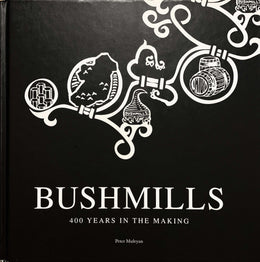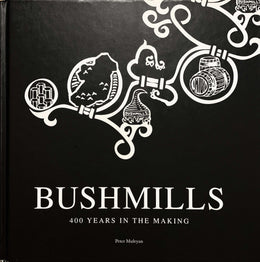IN THE EARLY 1970s Scottish Malt Distillers owned 3 distilleries on Islay: Port Ellen, Caol Ila and Lagavulin. The company decided that the quality, quantity and cost of malt being produced by these distilleries' traditional floor makings could be significantly improved by building a single modem makings to supply all 3 distilleries' needs. Thus Port Ellen Makings was built in 1972 and commissioned in 1973.
It was designed to supply high quality heavily peated malt to the 3 SMD Islay distilleries. Barley arrives at Port Ellen by boat, 750 to 1,200 tonnes at a time.
Up to 650 tonnes of barley can be held temporarily in the grain silo alongside the pier. Port Ellen Makings has 9 barley silos with a combined capacity of 2,040 tonnes, approximately 2,700 tonnes including the pier silo. To initiate malting, Port Ellen has 8 steel steeps, they are cylindro-conical vessels which hold 25 tonnes of barley and 30,000 litres of water each. Each steep has 2 aeration systems. The first system, "suction aeration", is used to suck fresh, cool air into the steep when it contains barley but is empty of water. The second system, "pressure aeration", is used when the barley is under water. Compressed air is blown from the bottom of the steep up through the water and barley, causing the barley to become well mixed.
To germinate the malt, Port Ellen has 7 huge, steel Boby drums, each drum holds the contents of 2 steeps which is 50 tonnes original barley weight or 65 tonnes of barley at 45% moisture content. These are the largest malting drums in the UK.
Large fans blow carefully controlled volumes of air through the "green malt" in the drum at just the right temperature and humidity to provide ideal growth conditions. Every 8 hours the drums take 5 minutes to do a complete rotation and so keep the malt in the drum mixed and free flowing.

Dann being transported to the Malting; 1975.

To kiln the malt, Port Ellen Makings has 3 kilns, each capable of holding the complete contents o f a single drum. Automatically controlled burners heat the malt and peat fires provide the "reek" (smoke) to flavour the malt. A typical, heavily peated, 50 tonne batch will require about 6 tonnes of peat to be burned. The peat used is harvested from Castlehill moss less than 3 miles across the hills from Port Ellen. The finished malt is stored in one of 31 malt silos with a combined capacity of 3,500 tonnes.
The new makings worked normally until the early 1980s when there was a general downturn in the production of new make whisky. Many distilleries across Scotland were closed at this time and all the others went on to part time production. At Scottish Malt Distillers, Port Ellen Distillery closed (in 1983) and Caol Ila and Lagavulin were both producing well below their maximum capacity.
At this point it appeared that the makings might have to be closed too as it was not economic to run the plant at these low production levels. However, the other distillers on the island came to the rescue.
They wished to obtain high quality Islay produced malt from Port Ellen and so the seeds of an agreement were sown. In 1987 the Concordat of Islay Distillers was signed—a gentleman's agreement between the maltings and all the distillers on Islay and Jura, who agreed to take at least a proportion of their malt from Port Ellen Makings — this saved the makings from closure and gave the distilleries access to high quality Islay malt. As part of the agreement the makings had to produce malt to each customer's specification. Instead of producing only high peated, direct fired malt, the makings had to satisfy the requirements of 8 distilleries whose specifications ranged across the entire spectrum of distilling malts from unpeated, indirect fired, through low and medium peated to the more familiar high peated and direct fired malts. The changing pattern of distillery ownership on the island, and changes in senior management, means that today the Concordat is not what it was, but demand for malt from Port Ellen remains high, driven largely by the requirements of Lagavulin and Caol Ila distilleries.

Port Ellen Distillery and Maltings photographed in 2002
Written by John A Thomson
The text is an excerpt from "Port Ellen: Distillery and Maltings" (pp. 9 - 11), written by John A Thomson, published 2010 by Diageo Plc.







